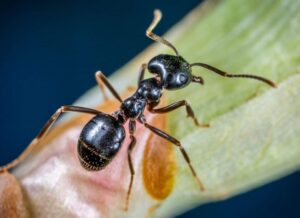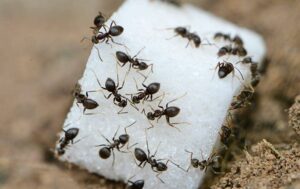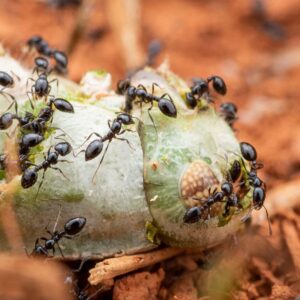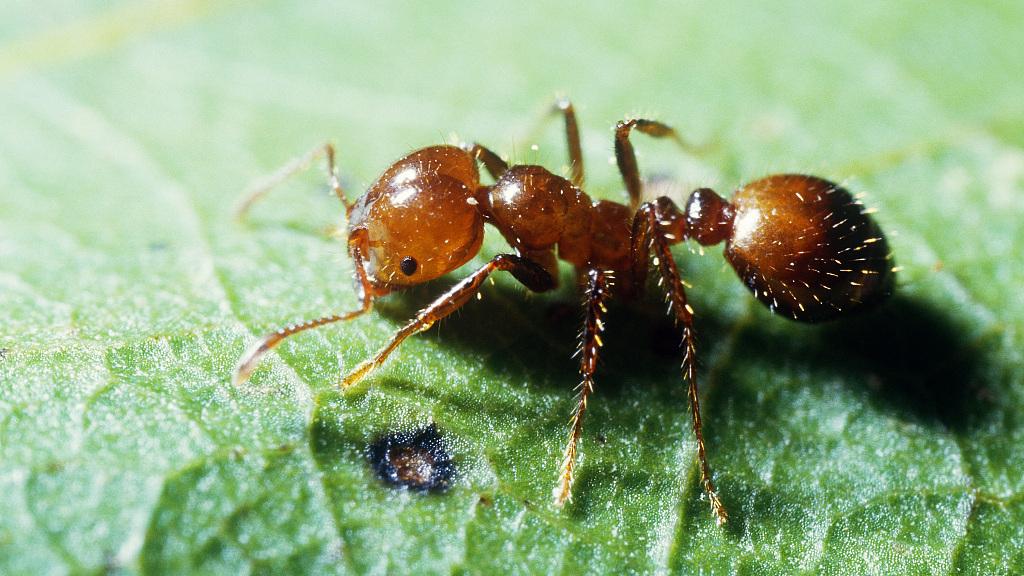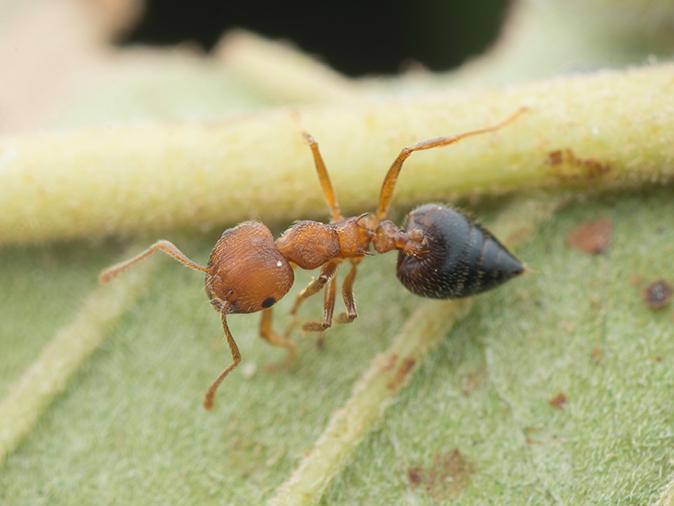Little Black Ant (Monomorium minimum)
Updated on
08/05/2023The little black ants are a small nocturnal ant species. They live in colonies and are more active during the summer.
Scientific Classification
- Class:Insecta
- Order:Hymenoptera
- Family:Formicidae
- Genus:Monomorium
- Scientific Name:M.minimum
Conservation Status
Description and Identification
Identification: They measure about 1.5 mm, with queens measuring up to 4 mm. Their body coloration ranges from jet black to dark brown. They have unevenly rounded thoraxes, a double-segmented pedicle and do not possess spines. Males and queens have wings. The antennae on their heads end in three-segment clubs and contain 12 segments.
Distribution: North America, across southern Canada, parts of Mexico, the eastern United States, south California, and the San Francisco Bay Area.
Habitat: Rotting logs, piles of bricks or lumber, and other wooded areas.
Do They Bite: No
Lifespan: The queens live several years, the workers several months, and the males for about a week.
Predators: Beetles, birds, frogs, toads, spiders, and other ants.
Behavior and Characteristics
Colony Cycle
They are eusocial, forming colonies that divide labor based on reproductive capabilities. Being monomorphic, this species has one worker caste. Since they are also polygyne, multiple queens in a single nest have been observed.
Each colony contains worker and queen ants, with about 2000 or more workers and 2-38 queens. The workers are all female and in charge of nursing larvae. Queens are responsible for reproducing.
Defense
While stressed or in defense, these little ants release a toxin by raising the back end of their bodies. It helps to ward off other ants, mainly competitors over resources. This process is called gaster flagging. If it does not work, they may fight.
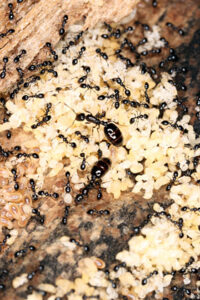
Feeding
They detect food by smelling through their antennae, feeding on corn meals, cotton flea hoppers, grease, honeydew of aphids, insects, plant secretions, sweets, and vegetables.
Nest-building
These ants tend to enter houses seeking heat and moisture. Once inside, they nest behind facades, decaying wood, masonry, woodwork, and wall voids.
Life Cycle
The breeding season occurs around June. The males and the queens perform a nuptial flight, mating midair. Shortly after, the males die, and the queens leave to start a colony. After constructing new nests, the queens shed their wings and lay eggs. The complete life cycle of a little black ant takes one month.
1. Egg Stage
In soil chambers, females lay soft-shelled eggs.
2. Larva Stage
After the eggs hatch, soft-bodied larvae emerge with no legs or antennae. They consume regurgitated food that the workers provide. These larvae are nursed in the brood chamber within the nest beneath the soil surface.
Those that are fed more grow larger and become queens.
3. Pupa Stage
During the pupa stage, these insects do not feed or move.
4. Adult Stage
The little black ant becomes a complete adult after emerging from the pupa.
Getting Rid of Little Black Ants
Although harmless, these ants can be a real nuisance. To prevent infestation, seal any cracks and crevices on the walls using a silicone-based caulk, store firewood far away from the house, and trim the shrubs around the house properly. Follow the trails of workers to locate the nests and exterminate them with necessary pesticides.
Interesting Facts
- The most common season for the little black ants to come out is June to August. They can be seen often during this time since they forage in trails.
Source
proactivepestga.com, branchcms.com, canada-ant-colony.com, northeastipm.org




